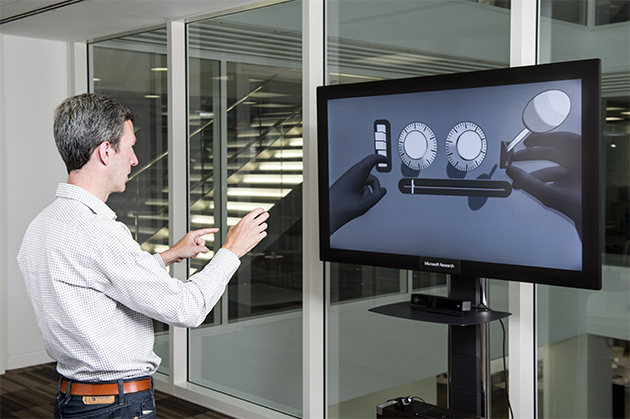
Microsoft aims to make hand recognition VR tools mainstream
Microsoft researchers are exploring new ways for technology to recognize detailed hand motions. Their research could lead to a world where putting presentations together on a computer no longer requires the use of a computer mouse, but just a little wrist motion, or bringing our hands into the virtual reality world so that we can press buttons and turn knobs in another dimension.
Ultimately, Microsoft’s goal is to allow humans to interact with technology in an entirely new way.
“How do we interact with things in the real world? Well, we pick them up, we touch them with our fingers, we manipulate them,” said Jamie Shotton, a principal researcher in computer vision at Microsoft’s Cambridge, UK, research lab, in a Microsoft blog post. “We should be able to do exactly the same thing with virtual objects. We should be able to reach out and touch them.”

While the technology is still evolving, the Microsoft computer scientists and engineers working on these projects believe they are pretty close to making hand and gesture recognition tools practical enough for mainstream use.
One important aspect of the technology that the team is still working on is accuracy. According to the researchers, the technology has to be able to track hand motion precisely, while using minimal computing power so that people can use their hands in a completely natural way, but still have gadgets respond.
The researchers have a system in the works, and though it’s still just a research project, it can track detailed hand motion with or without the use of a virtual reality headset, so that users can poke objects and turn knobs.
It also allows users to visualize what their hands are doing — rectifying a common issue that arises when people interact with VR.
Take a look at the research project in the video below.
For more information, visit Microsoft.

Comments are closed, but trackbacks and pingbacks are open.